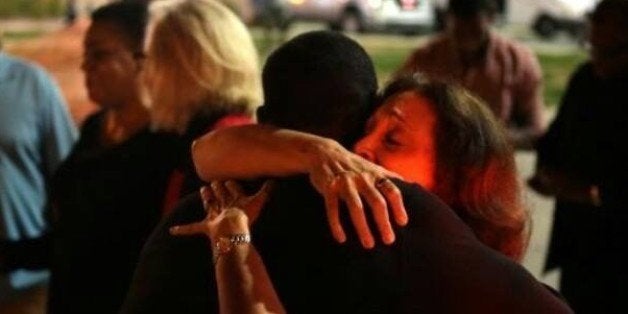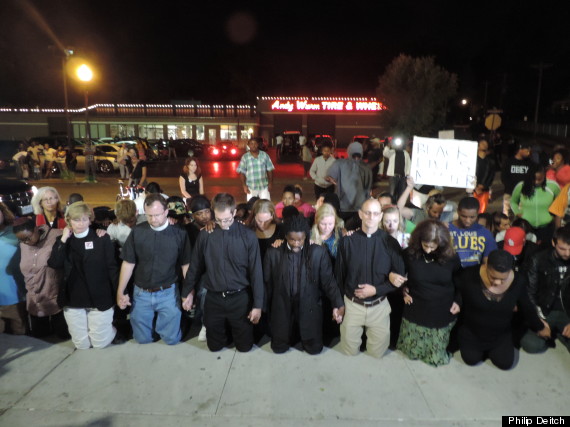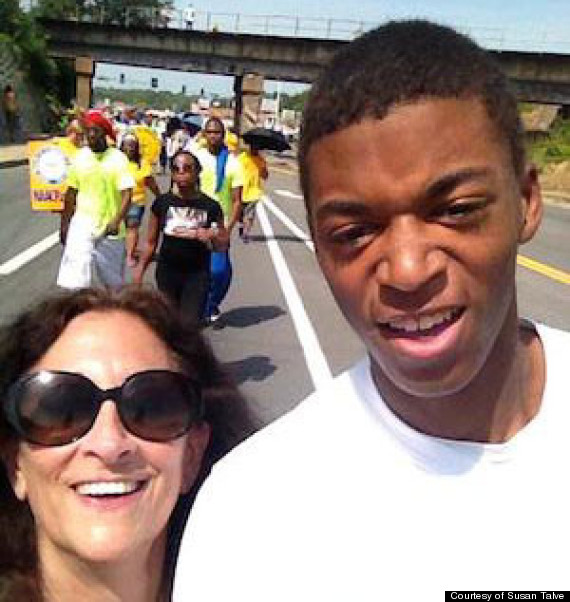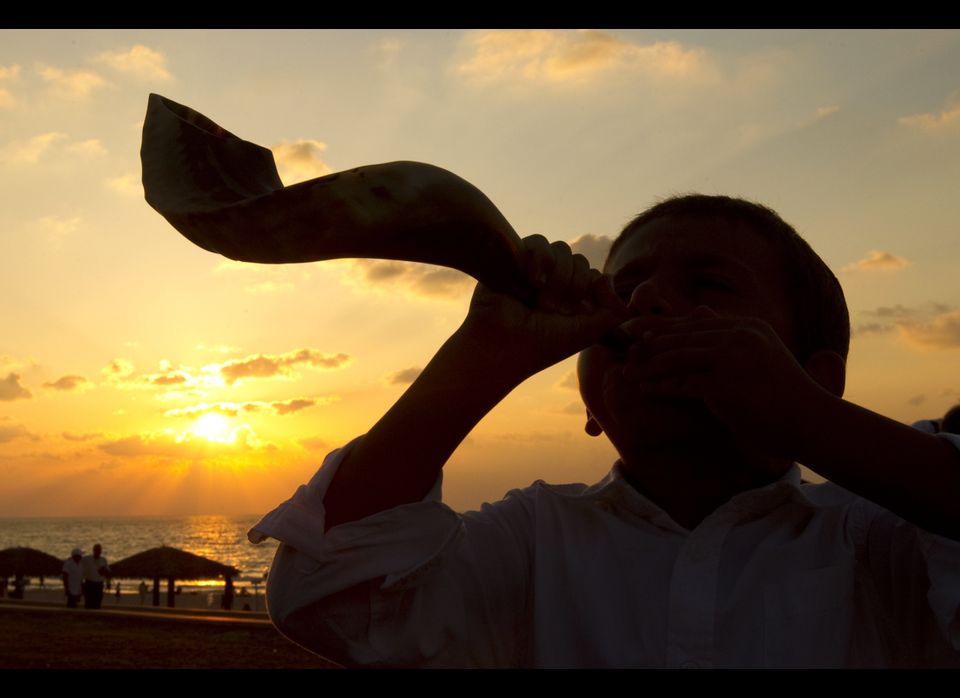
When protests erupted in Ferguson after the shooting of Michael Brown, Rabbi Susan Talve joined local clergy in the thick of the unrest.
As Yom Kippur, the Jewish Day of Atonement approaches, the lessons of repentance and forgiveness take on vital meaning in a place wrought with anger and distrust. For Talve, Head Rabbi of Central Reform Congregation in St. Louis, these lessons came alive on the streets of Ferguson.
“The other night when the protesters were out in the street, the police came with their vests, helmets and billy clubs and lined up. A group of us clergy got between police and protesters and started to pray. It was beautiful. The protesters came and put their hands on our backs. I looked in the eyes of one of the police officers, and I saw his face behind his helmet. I saw his eyes, and there was a tenderness in his eyes. Before that there was fear, and then there was tenderness.”
The shift from fear to tenderness is the kind of the transformation that gives Yom Kippur its exalted place in Jewish tradition and makes it the highest attended day at synagogue in the year.

A line of clergy kneels to pray in Ferguson. (Photo: Philip Deitch)
"It is often described as the holiest day of the year because the Bible calls it the 'Sabbath of Sabbaths,'" Rabbi Bradley Hirschfield, president of Clal and co-founder of The Wisdom Daily, told HuffPost.
Talve was in Israel this summer when three missing Israeli teenagers were found dead in the West Bank and a Palestinian boy was killed in a retribution attack. She returned home to Missouri just as Ferguson erupted following Michael Brown’s death. Talve said she felt that in many ways the recent months have been characterized by the deaths of young men.
2014 also marks the 50th anniversary of the murders of American civil rights' workers James Earl Chaney, Andrew Goodman and Michael "Mickey" Schwerner -- three young men working on the "Freedom Summer" campaign, attempting to register African Americans to vote in Mississippi.
“I just wonder if the willingness of a society to sacrifice their sons is what we need to atone for,” Talve said. “I don’t want to see anymore of our young men die.”
This year Yom Kippur falls on October 4, the same day Catholics celebrate the Feast of St. Francis of Assisi and Muslims celebrate Eid al-Adha. The confluence of these three Abrahamic holidays on one day is rare. For Talve it adds extra significance to an already powerful day on which Jews believe God forgives all sin.
"It's about bridging gaps and reconciling where there’s been rupture," Hirschfield said. “The need to reconnect and heal those ruptures is fundamental to what it means to be human.”
But confessing one's "sins" is no easy task, Talve explained. In the case of Ferguson, the offenses of individuals are complicated by systemic issues plaguing society, including racism.
A daunting but integral component of Yom Kippur, however, is that observers confess to their own wrongdoing and assume responsibility for the offenses of society -- even humanity -- as a whole. For Talve, night after night in Ferguson, joining clergy to pray in the fragile space between protesters and police, has taught her that we are all responsible for the society in which we live.
"When we’re not part of a solution we’re part of the problem. When we don’t speak up, when we’re compliant with things we know are wrong then we have to confess our part in them.”
No one can singlehandedly assume responsibility for all the wounds of society that have festered for so long, but Talve believes that Yom Kippur offers an opportunity for healing if the congregation stands united.
“When we are standing together we can dare to take on the sins of humanity and not be overcome by them,” Talve said. “Yom Kippur gives us the opportunity, because we don’t do it alone, to not cover up these sores again until they’re completely healed.”

Rabbi Talve marches in Ferguson with Terrell Jr., a young man who knew Michael Brown.
On Yom Kippur Jews engage in a process called teshuva, the act of atoning which literally translates as "return." Teshuva entails four steps: regret for wrongdoing, cessation of harmful behavior, confession of offenses and resolution to do better in the future.
“Yom Kippur is not a time to hide," Talve told HuffPost. "The principle is there are no shortcuts to repentance.”
Some offenses are harder to recover from than others, Talve said. And the consequences of one's actions can “last for generations.”
But that does not make reconciliation impossible -- and it certainly does not exclude anyone from synagogue, no matter how gravely they feel they have sinned.
“The gates of forgiveness are never closed," Talve told HuffPost. “I would not want anyone not to come to the synagogue because they felt they could not be forgiven. There is a place for everyone on Yom Kippur.”
Talve takes this sentiment literally and said on Yom Kippur there are no barriers to her congregation. On a day when many other synagogues require payment for attendance in the form of annual dues or special event tickets, Talve's congregation rents out a big ballroom and asks no entry fee.
"It's the one day people want to come home," Talve said. "You can't put any barriers in the way. Yom Kippur is a whole day that you get to be in the synagogue. We have 24 hours of fasting and praying to do the internal work so that when we emerge, when we break our fast, we’ve shifted destiny a little bit for the better."

